Nestled in the heart of Africa, Rwanda is unlike any other country on the continent. With rich soils, evergreen landscapes, and rolling hills, it’s poised as a true African Oasis. Considering the country is a similar size to Wales, it offers a great diversity of culture, flora, and fauna, which is ready to experience. Here’s the perfect six-day itinerary to explore this beautiful nation.
Day 1 – Kigali
Travellers flying into Rwanda will arrive at Kigali International airport. During the drive into the city, you will quickly realise that the capital is impeccably clean, with greenery everywhere. Visitors should spend at least one day in Kigali to experience the capital and understand its history and culture. A walking tour around the old part of the city, ‘Nyamirambo’, includes a visit to the local women’s centre, the popular milk bars, and a local fresh produce market to absorb the regional sights and smells! No visit to Kigali is complete without experiencing the sombre Kigali Genocide Memorial. The Rwandan genocide started in April 1994 and resulted in the death of more than 1 million people. The memorial acts as a stark reminder to visitors of this very recent tragedy, and the grounds are the final resting place for more than 250,000 Rwandan people. 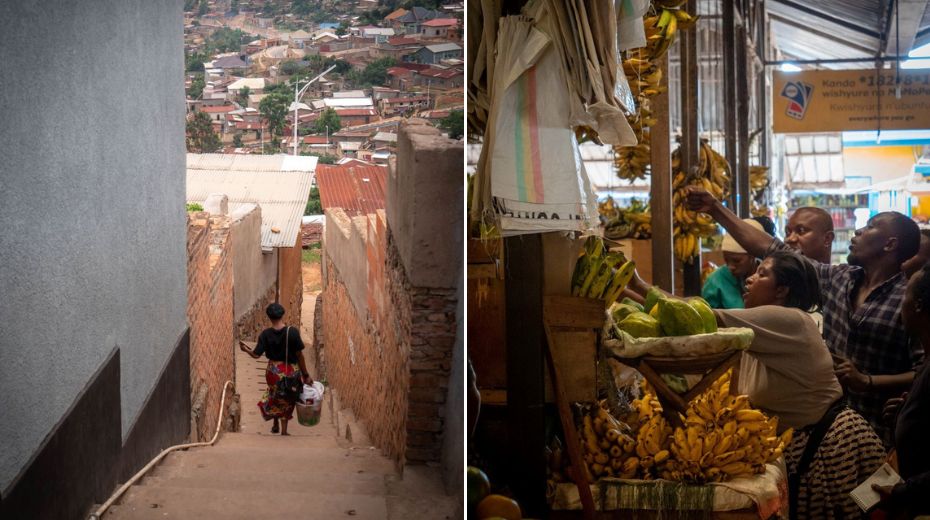
Day 2 – Inyambo
The King’s Palace in Nyanza is another Rwandan must-see. Visitors can take a tour around a reconstructed version of the King’s living quarters, which comprises beautifully crafted straw huts. Yet, the real highlight of the tour must be the Inyambo. Inyambo is Rwandan royal or sacred cows, they are spectacular long-horned beasts with big personalities. After being formally introduced to the cows, visitors can get up close and personal with these magnificent animals to groom and pet them. 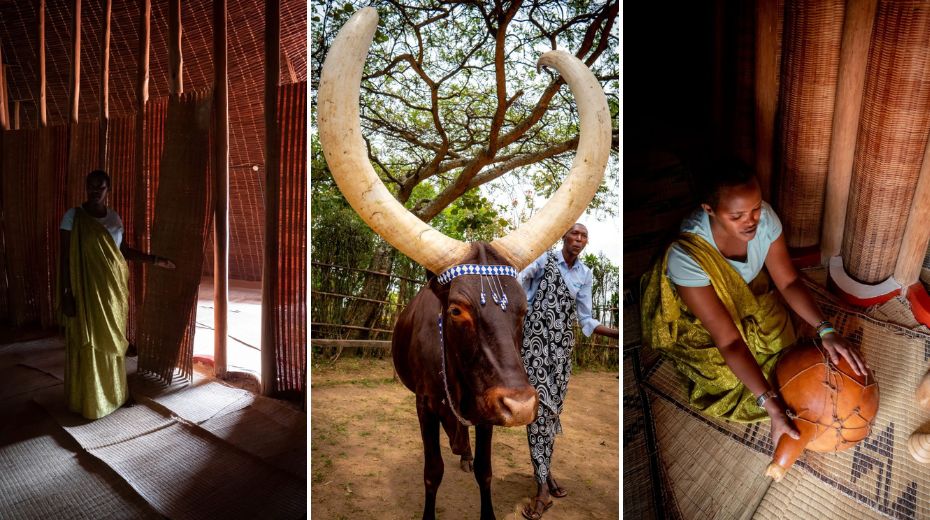
Day 3 – Nyungwe Forest
Nyungwe Forest is one of the oldest forests in Africa, and well worth a visit. The whole area offers a deep sense of peace and tranquillity, and the Canopy Walk provides a unique perspective to view the landscape. Colobus and Blue monkeys are the most common primates to stumble across on this route, but chimpanzees are also around. The suspended canopy bridge showcases the lush greenery of the forest floor below and the impressive canopy which is seemingly endless. It extends as far as the eye can see, and mist mottles from the constant downpours of the wet season, giving the place an air of mystery and enchantment. The forest is also surrounded by local tea plantations, and travellers can gear up with aprons and baskets to lend a hand to workers. Tea picking is an art in Rwanda, and both men and women enter the fields every day to earn a fair wage. 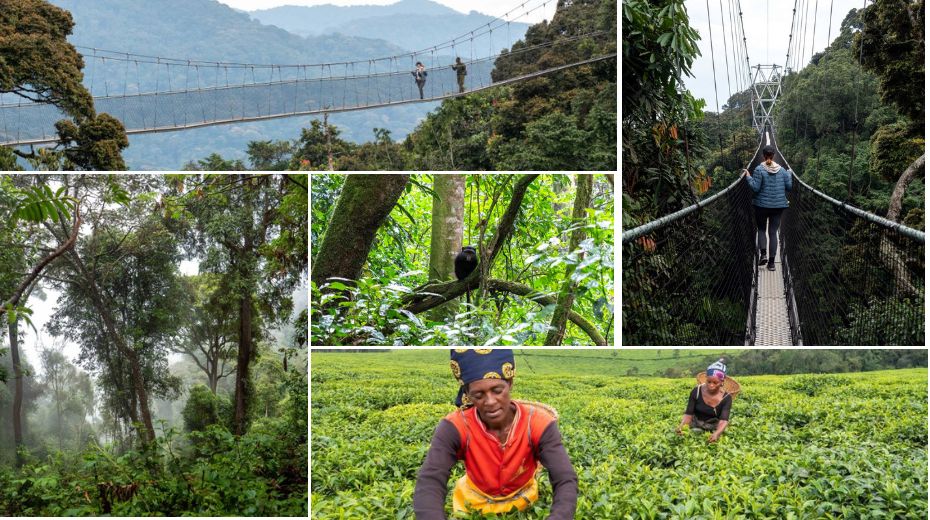
Day 4 – The Congo Nile Trail
Mountain biking part – or all – of the Congo Nile Trail is a must for adrenaline-junky travellers. While the full trail is around 160 miles and takes five days complete, it isn’t for the faint-hearted. The trail and terrain are challenging, but the downhill segments more than make up for the uphill struggles. Travellers can come across groups of local children and explore vast expanses of rice terraces and pine forests. Along the way, bikers can also stop into a local coffee cooperative to learn all about delicious Rwandan coffee. You can even plant your own coffee plant and generally enjoy a caffeine-fuelled pit stop. 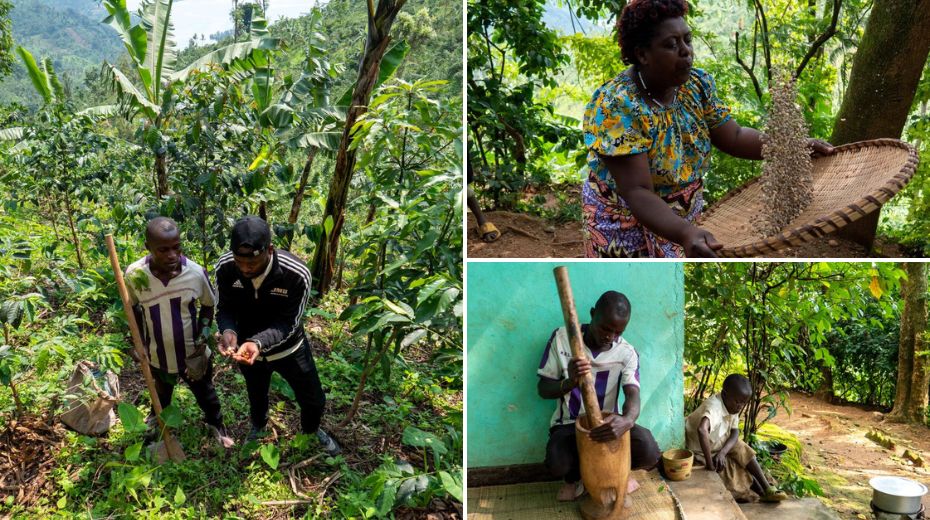
Day 5 – Rubavu
In the foothills of Bigogwe, visitors can find themselves somewhere that looks more at home in the Irish countryside than in Africa. Rolling green-grass hills are visible, dotted with herds of black and white cows. Travellers can join local dairy farmer, Ngabo Karegeya (who describes himself as a certified cowboy) to learn about the huge milk culture in Rwanda. Here, animals roam freely and get milked by hand every day, visitors can even become honorary milkmaids for an afternoon. The farmers stay with the cows around the clock so, they created their own entertainment. High jump is a popular game, where participants stick their staffs in the ground and see who can jump over them without falling over. 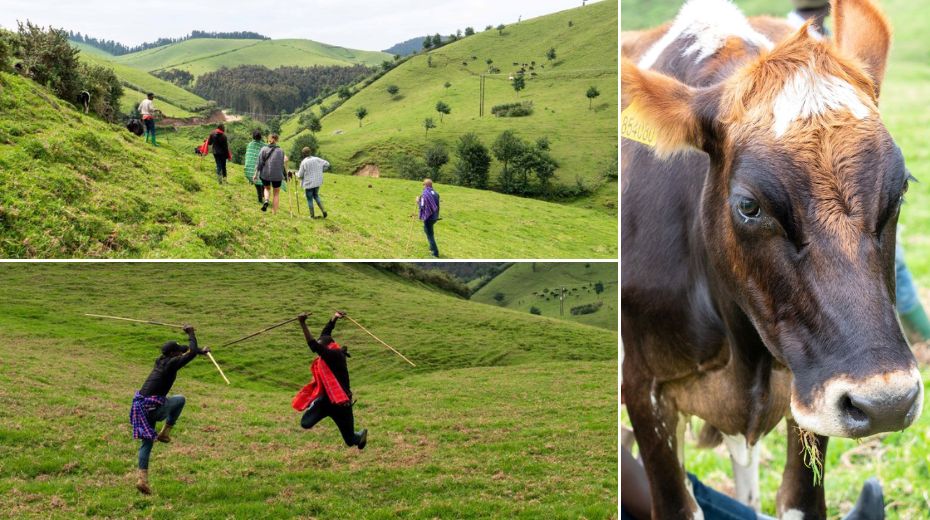
Day 6 – Meeting the Gorillas
Perhaps the biggest itinerary highlight is meeting the Mountain Gorillas. Travellers can expect a 6am start at Volcanoes National Park, which begins with a comprehensive safety briefing. These animals could easily kill a human in one quick movement so, this is essential. The gorillas here have pushed and kicked people if they get too close or if they take a disliking to a person. With several groups departing daily, travellers can visit one of ten habituated gorilla families in the park. Some are within a 30-minute walk, and others, a 4-hour hike. Armed trackers accompany every group for the protection of the gorillas and visitors. Visitors currently need to wear masks, as a group of gorillas in the park was unfortunate enough to catch COVID-19. After as little as 30-minutes, visitors find themselves in front of these beautiful animals. The large silverback males are enormous, and the whole family are often sitting chomping on bamboo. The stark resemblance between gorillas and humans quickly becomes clear in their presence. The guides advise travellers to spend the first 30-minutes taking pictures and getting videos. If you’re lucky, you may even get a close-up encounter with a baby gorilla that takes an interest in fluffy camera microphones! You should spend the last 30-minutes sitting in the grass and observing the everyday lives of these bewildering creatures. Some are napping, some are eating bamboo, and all the youngsters are playing, chasing, hitting and biting one another – much like human siblings. One important thing to note about seeing the gorillas in Rwanda is the price tag attached to the experience. It costs $1,500 per person, per day to see them, which isn’t a small amount. But, it’s 100% worth the money and a truly once-in-a-lifetime opportunity. When leaving the park, visitors can opt to stop at The Ellen DeGeneres Campus of the Dian Fossey Gorilla Fund. The campus has all the information anybody could want about the gorillas of Rwanda and learn all about Dian Fossey’s work with the animals. 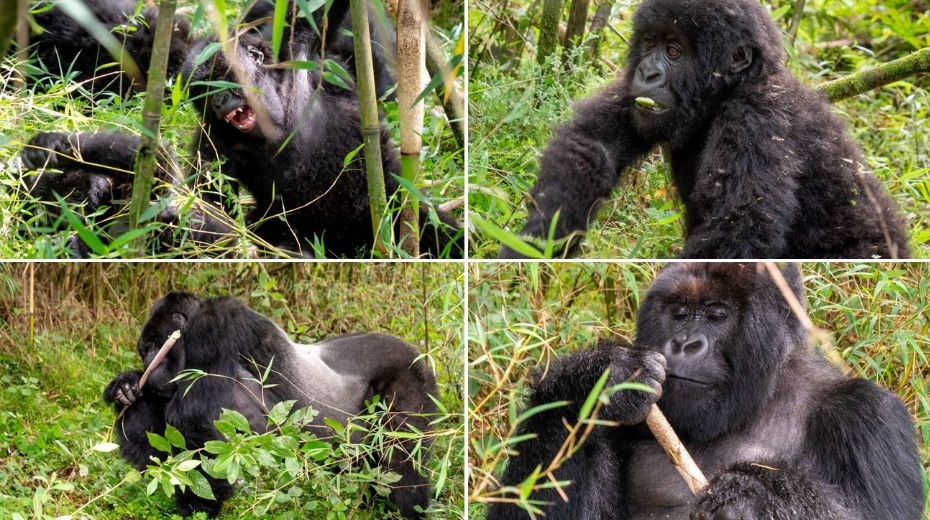 From visiting the plantations and seeing the vast green landscapes to experiencing the people and culture, this six-day itinerary provides everything a traveller needs to gain a true overview of Rwandan life.
From visiting the plantations and seeing the vast green landscapes to experiencing the people and culture, this six-day itinerary provides everything a traveller needs to gain a true overview of Rwandan life.
The App
If you want to learn more about this Rwandan itinerary or others, why not try the Visit Rwanda app? In the app, you can see everything that this amazing country has to offer, including all the tours, trips and experiences included in this blog. Users can also book their experience via the app and learn about Rwanda’s rich heritage. So, if you’re looking to book your trip to Rwanda, download the app, here!

